Charging all your devices out camping or during an emergency is kind of a new idea but can be a lifesaver. But there are a ton of power stations on the market and they have pages and pages of features with confusing jargon.
How do you know which is the best?
How should we even compare them?
This article steps through all the jargon around portable power stations so you can get on with buying the best one for you. We’re not going to dig into all the electricity science here, just enough to compare new power stations.
(Skip to the Power Station Reviews)
What is a Portable Power Station?
Power Stations are basically just big batteries. They have AC outlets and USB ports on them to charge your devices. You can charge the battery itself from the wall, solar panels or a car charger.
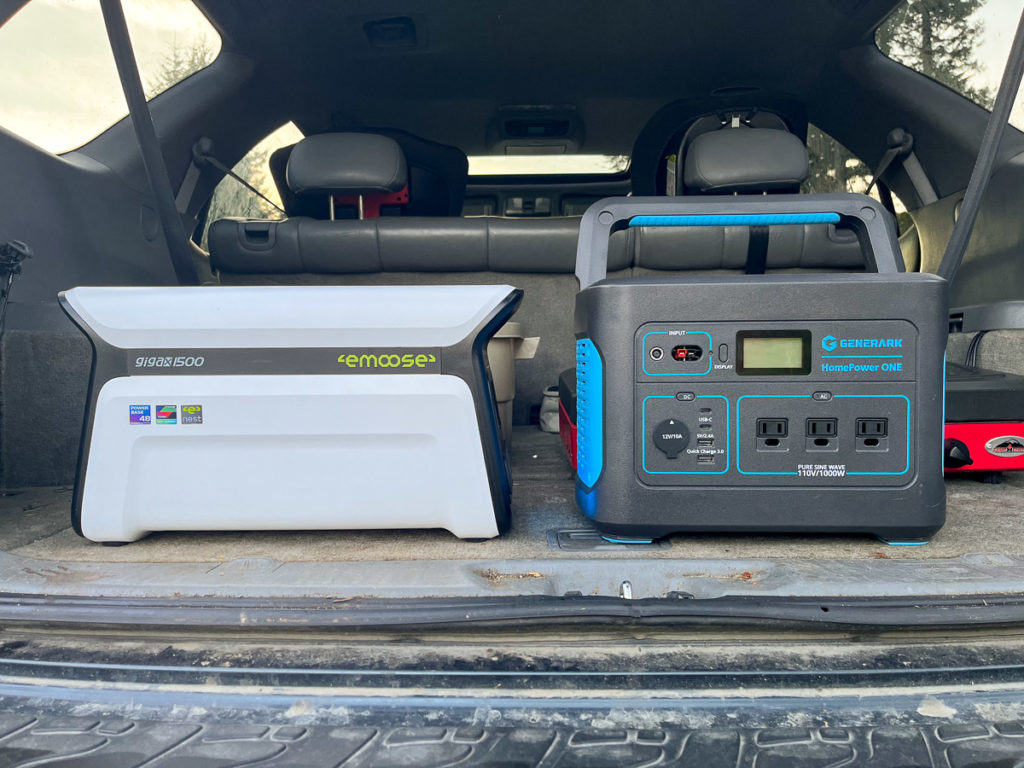
There are many different sizes of power station. The smallest fit in your pocket to charge your phone or camera. The largest requires wheels and can run fridges, TVs and power tools around the house. As the size, weight and power capacity goes up, so does the price.
Let’s get into the features.
Power Station Features
Power Capacity in Watt-hours
The amount of energy stored in a power station is usually measured in watt-hours. On small power banks or batteries you might see it in milliamp-hours. Same idea. Watt-hours is more energy.
Power stations with AC outlets and not just USB ports usually start around 150 or 200 watt-hours and go up from there. The Yeti 200X has 187 watt-hours of power and weighs 5 pounds. It could charge your phone about 16 times or run a 25 watt portable fridge for 8 hours.
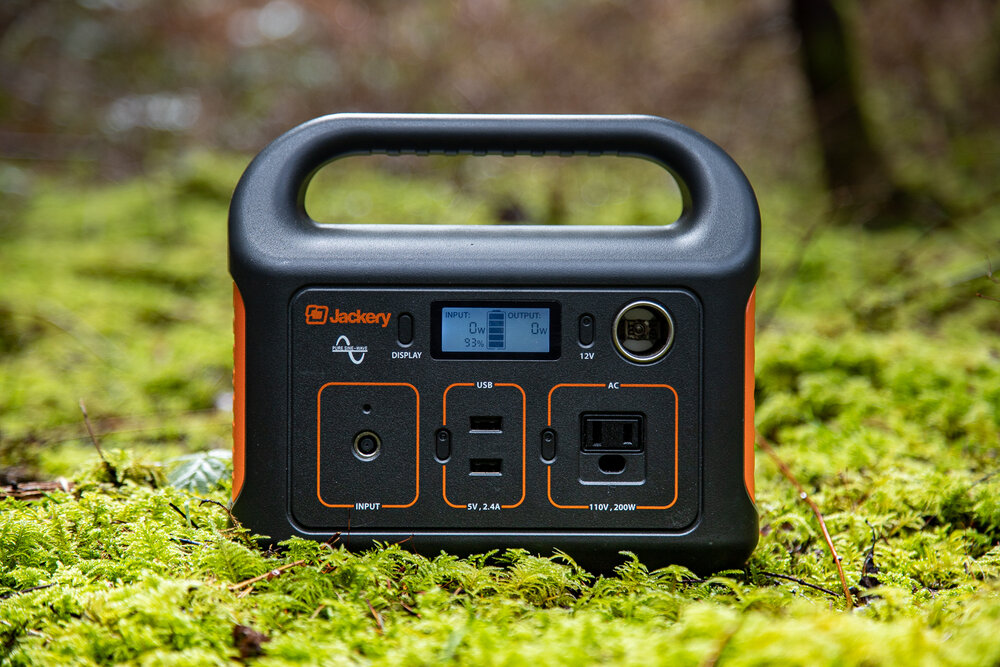
On the other end of the scale, is the Jackery Explorer 3000 Pro with 3024 watt-hours. It can charge your phone 252 times, has wheels and weighs about 63 pounds(it’s also $4000). It would be able to power a 25 watt portable fridge for 120 hours.
Power Rating in Watts
Think of watts as the speed the electricity can come out of the battery. The watt-hours is the total amount of electricity in the battery.
An iPhone draw 9 or 10 watts at a time. A big laptop that might draw 60 or 80 watts. Kitchen appliances or hair dryers can reach 1200 or 1500 watts.
If I had 200 watt-hours in a battery and wanted to charge something at 50 watts, I could use it for 4 hours.
200 watt-hours = 50 watts for 4 hours
I could also charge something at 10 watts for 20 hours.
200 watt-hours = 10 watts for 20 hours
Devices add up if you are charging at the same time. Charging 3 devices for 1 hour at 10 watts each will need 30 watt-hours.
3 devices x 10 watts x 1 hour = 30 watt-hours.
Wireless Charging Mat
Most devices need to be plugged in but some phones and headphones can be charged wirelessly now. They still need to be very close to the charging mat but at least it doesn’t need the wires.
These wireless mats usually put out about 10 to 15 watts when charging.
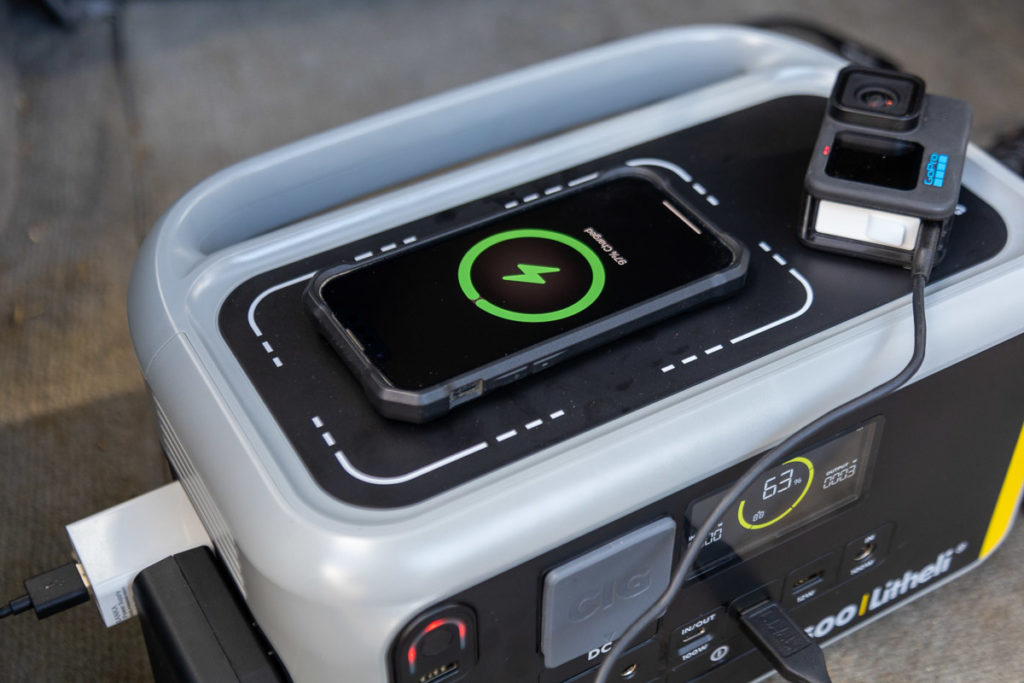
USB-A ports
USB has a bunch of different shaped ports and USB-A is the standard rectangle we’ve all had for ages.
One thing to watch out for with these is that they can be different wattages, and charge at different speeds. They can be anywhere from 2 watts up to 30 watts. 30 watts will charge your devices much faster if they support it.
USB-A can’t support the faster speeds to charge larger devices so if you have a laptop or something that needs Power Delivery, check the ports support it.
USB-C (input and output)
USB is slowly changing over to the newer and faster USB-C. It’s an oval shape instead of the old rectangle so it doesn’t matter which direction you plug it in (ever have to plug in a USB cord 3 times to get it to fit?).
USB-C has the capability go charge much faster than USB-A as well. Common speeds on power stations will be 60, 80 or 100 watts on the USB-C port.
Another interesting feature with USB-C is that it can go two directions. The same USB port can go into the power station to charge it and go out to your device. 60 watts or higher on these ports can power larger devices like laptops and big cameras.
AC ports
AC ports are just like your 110 volt AC plugs in your home. You can plug lights, fish tank pumps, coffee makers or portable projectors into these AC outlets just like at home.
Many AC ports are not grounded on power stations so check if you need that for appliances like fridges.
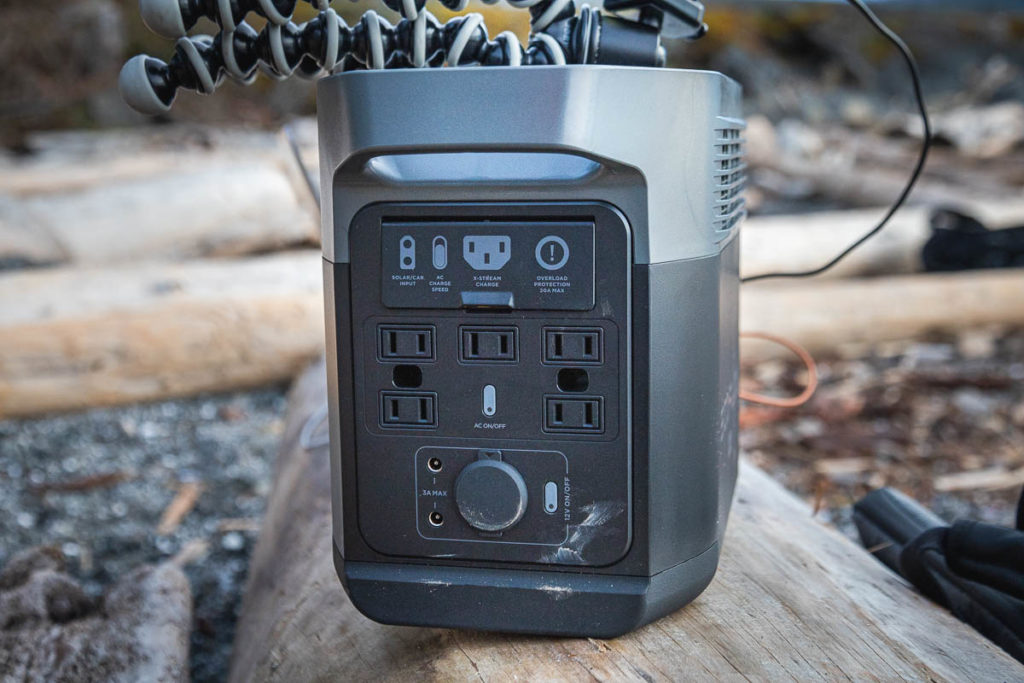
I always run out of USB ports so I usually plug in some adapters in to the AC outlet for more USB ports. These charging blocks often pull power even when they’re not charging anything so I unplug them when they’re not being used.
Check the spacing between AC outlets when buying a power station. Some are very close together and can’t fit two large power adapters at the same time.
Battery Management System (BMS)
Most power stations have some sort of battery management system. These manage the charging and temperature of the battery automatically. I wouldn’t buy one without it unless you are going to rig your own.
Screen
Power stations need to show you how much power is going in and how, and how much is left. The screen is often small, dimmable and may have a menu to change options on the battery.
Mobile App
Some power stations have a mobile app as well. This can be handy to see how much power is going in and out, set alerts, check the health of the battery and update firmware. It’s much easier to update the software in an app for a battery after it’s already built so manufacturers are doing this more and more.
Car Port
These are a DC port just like the cigarette lighter in your car. If you have a device that would plug in to the car, you could plug it into the power station instead. Many people plug the power station into the car, then all the devices into the power station. When the car is running, the power station charge. The devices charge from the power station in between.
Power Station Definitions
Watt-hours (Wh)
Capacity of the battery in a power station. Basically how big the bucket is for electricity to be stored. The more watt-hours, the more you can charge. Higher watt-hours also equals bigger, heavier power station.
Milliamp-hours (mAh)
Milliamp-hours are the same as watt hours but just a smaller unit, like metres and centimetres. Pocket-sized power banks for charging your phone are usually measured in mAh.
Watts
Speed or amount of charge for using electricity. Phones use about 10 watts when they charge. Laptops use about 70 to 80 watts to charge. Small appliances can use from 100 to over 2000 watts. Check the maximum peak or surge power on the power station before plugging in larger appliances.
Cost per watt/watt-hour
A useful number to compare power stations. Take the total cost of the power station and divide by the total watts or watt-hours. This isn’t the only feature of a power station but it lets you compare capacity or charge speed.
USB-A
Rectangle USB plugs. Older and usually slower.
USB-C
Oval USB plugs. Newer and usually faster.
MC4
An adapter for power cords that is often on solar panels. If you want to hook up to a solar panel, you’ll probably need an MC4 adapter to get from your panel to the DC on the power station. Many power stations and solar panels come with one.
DC
Direct current. Small, round plugs found on power stations and older electrical devices.
AC
Alternating current. Usually the same plug as the power outlets at your home.
Life Cycles
Every time you charge a battery it depletes the battery materials inside. These are often listed as 1000 cycles to 80% or something like that. That means 1000 full charges will reduce the total capacity down to 80% what the battery originally held. So if you started with 2000 watt-hours, then you’ll be down to a maximum of 1600 watt-hours after 1000 full charges.
Different types of batteries have different life cycles. Newer tech will have a much higher number of charges before getting down to 80% but will cost more.
Cooling Fan
Batteries get hot when they’re charging fast or it’s hot outside. Most power stations have fans inside that cool them down. The battery management system turns them on and off. Try and test the power station you want or watch videos to see how loud the fans are. The fans usually only turn on when it’s charging or you are using the AC outlets.
Power Delivery (PD)
Power Delivery is a specific type of USB-C connection that charge larger devices faster. Some devices require PD to charge. If you have one of these, make sure the power station you buy supports it.
Power Station Reviews
- Bluetti AC70 Portable Power Station ReviewWith so many new companies and power stations coming out, it’s hard to know which ones to trust. Bluetti is… Read More »Bluetti AC70 Portable Power Station Review
- Portable Power Station (Battery) Buying GuideCharging all your devices out camping or during an emergency is kind of a new idea but can be a… Read More »Portable Power Station (Battery) Buying Guide
- Runhood RALLYE 600 Power StationPower stations are normally just big batteries. The ports charge your devices and recharge the battery. They’ve gotten better over… Read More »Runhood RALLYE 600 Power Station
- emoose GIGA X1500 Power Station ReviewTons of power stations are hitting the market right now. They’re great for camping, power outages, and just powering tools… Read More »emoose GIGA X1500 Power Station Review
- Innovative Charging: Litheli B600 Power Hub ReviewThe Litheli B600 Power Station has 9 ports and 2 built in portable power backs.
- EcoFlow Delta Mini Portable Power Station ReviewIt’s tough to on a road trip, camping or working around the house without extra electricity. All our devices depend… Read More »EcoFlow Delta Mini Portable Power Station Review
- Generark HomePower One Battery Power Station ReviewAll that camping and backpacking gear in your garage is perfect for emergencies. If the power goes out for days… Read More »Generark HomePower One Battery Power Station Review
- Jackery Explorer 500 Portable Power Station ReviewWith over 500 watt-hours of power and 7 different ports to charge from, the Jackery Explorer 500 keep all your devices charged up for days.
- Jackery Explorer 240 Review: Portable Power Station
The Jackery Explorer 240 Power Station can power laptops, tvs, fans and lights but is still lightweight and easy to carry around.
- Goal Zero Sherpa 100AC Battery Pack Review
25600 mAh of power to charge up laptops, cameras, drones and just about anything else you have on your remote trips.
- Goal Zero Sherpa 100PD Battery Pack ReviewDevices are taking over our lives. It’s a double edged sword with so many cool gadgets and gizmos helping us… Read More »Goal Zero Sherpa 100PD Battery Pack Review
Power Station FAQ
How much does a Power Station cost?
Power stations can cost anywhere from $50 up to $5000 depending on the size.
How fast do they charge?
Power stations range in charging speed from 10 watts up to 2000 watts or more. Small or fast power stations can fully charge in 1 hour. Larger or slower stations can take 8 hours or more.
How big should I buy?
Make a list what you want to charge, how big the battery is on each and how many times you want to charge it. That should give you a total watt-hours you need.
If I wanted to charge the Dometic CFX3 45 powered cooler, it takes about 50 watts to cool down and then just 1 watt to keep it at that temperature.
What brands are good?
Ecoflow, Jackery, eMoose, Runhood, Bluetti, and GoalZero all make great power stations.
Can I fly with a Power Station?
Most airlines will let you fly with batteries 100 watt-hours or less in carry-on. For check lugged, check with the airline.
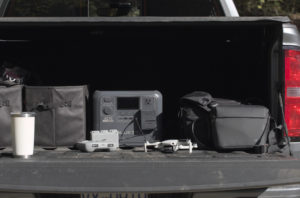
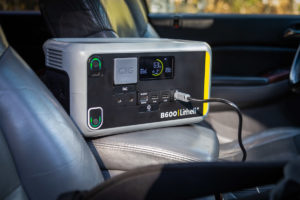
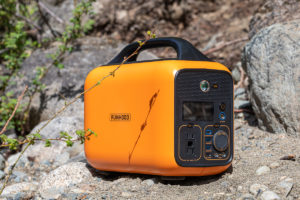
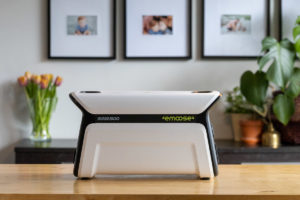
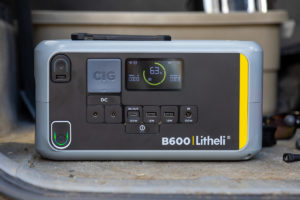
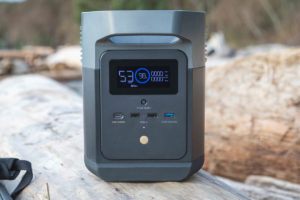
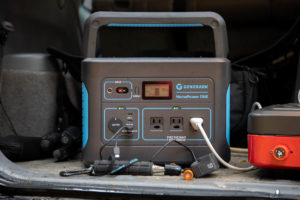
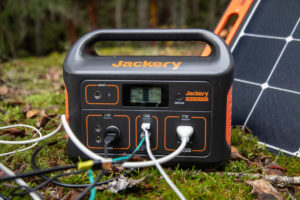
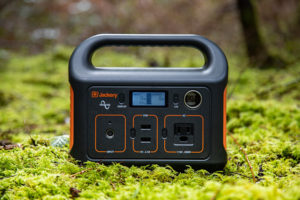
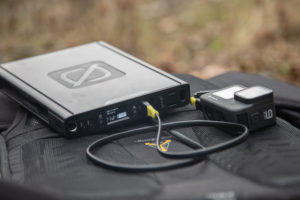
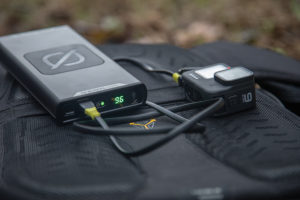
Great tips on selecting the right power station for outdoor activities!